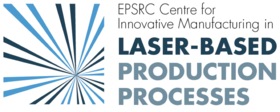
|
Many metal manufacturing processes, such as welding and additive manufacture, use shield gas to protect the molten and solidifying metal surfaces from the atmosphere. In carbon steels, nitrogen and oxygen can create non-metallic inclusions that weaken the weld metal. In stainless steels, poor shielding can lead to discolouration of the weld area and increased likelihood of corrosion. The shield gas, typically a mixture of carbon dioxide (CO2) and argon, flows over the heated region to protect it from the atmosphere.
It is therefore necessary to understand the shield gas flow and coverage with respect to various influencing variables. For welding these variables include cross-drafts, nozzle stand-off and angle, spatter build-up on nozzle, nozzle design, etc. For additive manufacture, these variables include feature height and scale, effect of side jets, etc. The purpose of this EngD is to devise and develop optical techniques to visualize and quantify shield gas flows in welding and additive manufacture. The EngD candidate will devise and develop the optical techniques at Heriot-Watt, and conduct experiments at BAE Systems, Cranfield and Strathclyde. The experimental data will be used to validate a CFD models developed by the EngD candidate. |
Contact Details:
For more information please contact Prof Andrew Moore, a.moore@hw.ac.uk.

 © EPSRC Centre for Innovative Manufacturing in Laser-Based Production Processes
© EPSRC Centre for Innovative Manufacturing in Laser-Based Production Processes